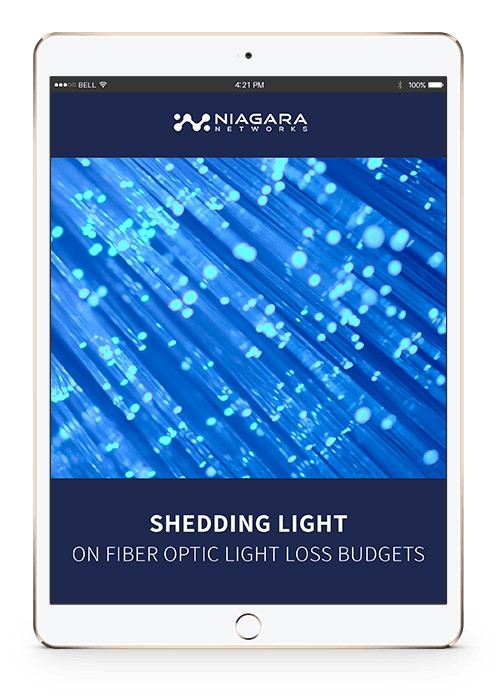Shedding Light on Fiber Optic Light Loss Budgets
Fiber optics have opened the doors to a new era of data and communication transmission, and offer advantages that surpass those of traditional copper cabling.
To best implement fiber cabling, you need to become familiar with its characteristics, parameters, and limitations. Furthermore, it's crucial to understand fiber optic lights loss budgets and how to calculate them.
This white paper provides a detailed explanation of fiber optics, their many features, and most importantly, fiber optic lights loss budgets.

After reading this white paper, you will know:
- Everything about fiber optic light loss budgets, and how to calculate them
- How to identify and address the challenges involved with calculating fiber optic light loss budgets
- More about key terms related to fiber optic light loss budgets, and additional concepts including Laser Light Sources, OSNR, and Eye Patterns.
- How to choose the right fibers, as well as the various types available
- The Importance of influential factors such as PSM (Parallel Single Mode) Links, optical splitters, and network tap light flow
Your network visibility layer is vital for both managing your network and securing it from today’s sophisticated cyber attacks. This has made the network tap an essential tool for ensuring this is achieved.
The taps that are used in fiber-optic networks offer their own unique advantages which traditional optic fibres do not. Understanding the concept of fiber optic light loss budgets and their calculations will ensure a powerful network visibility layer, as well as maximum ROI for your enterprise.